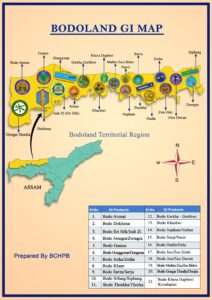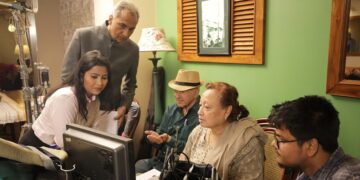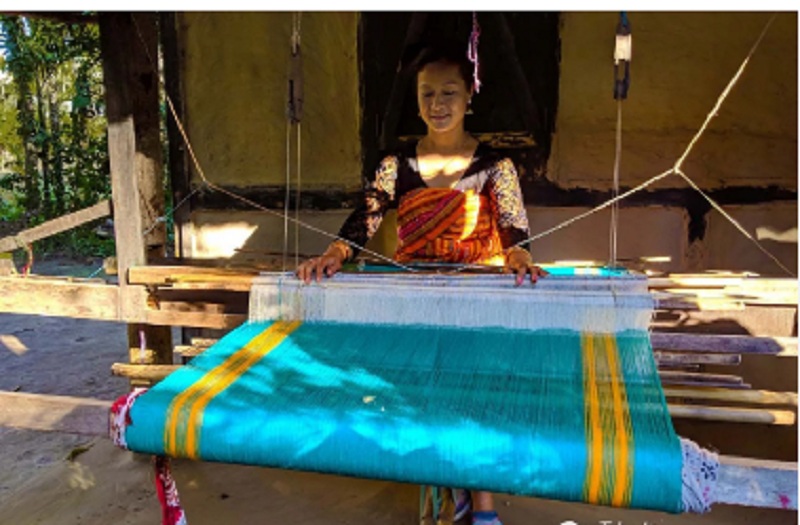Guwahati: Following its remarkable achievement of securing 21 Geographical Indication (GI) tags, the Bodoland Territorial Region (BTR) has now set its sights on a new, groundbreaking goal of including more than one lakh tribal artisans, farmers and weavers as Authorised Users (AU) of the GI tags.
The BTR government has drawn a detailed plan for a massive Authorised Users registration drive under CEM’s Special Initiative Scheme.
While India has over 600 GI products, only 29,000 have been registered as Authorised Users. By targeting over one lakh registrations, Bodoland is poised to become the icon of the GI revolution, with the highest number of AUs from a single tribal community.
A mobile application has been developed to streamline the registration process for tribal artisans, farmers, and weavers. Each Authorised User will be linked to at least 2–3 GI products, and will get access to government schemes, exposure trips, training, modern marketing tools, and legal protection.
Notably, the Bodoland Territorial Region (BTR) has secured 21 Geographical Indication (GI) tags for its traditional products, crafts, and agricultural items. This significant achievement was spearheaded by a team of local youths, positioning Bodoland as a frontrunner in India’s GI movement and a role model for other tribal and autonomous regions.
“We missed the Industrial Revolution and the IT Revolution, but we will not miss the GI Revolution,” Ling Narzihary, one of the brains behind Bodoland’s GI tag initiative, said.
The GI tags were secured in two phases, with 13 approved in November 2023 and the remaining eight in May 2024.
The 21 GI tags mark the beginning of a new chapter in Bodoland’s journey. The initiative was to preserve Bodo cultural heritage and stop the appropriation of motifs, textiles, and instruments.

It also aimed to preserve traditions, empower youth, revive dying practices, and formalize unorganized sectors, which included three traditional alcoholic beverages.
The effort was driven by a young team of Bodo entrepreneurs—Kansai Brahma, Nachani Brahma, Pulak Basumatary, Swapna Muchahary, and Ling Narzihary.
Initially, the team researched hundreds of items, and ultimately shot-listed 50+ items and filed 21 GI applications.
To achieve this, they collaborated with Advocate and Professor Ganesh Hingmire, a two-time National Award winner for his work on Geographical Indications.
The success not only puts Bodoland on India’s cultural and economic map but also sets the stage for long-term benefits for its indigenous tribal communities, who have nurtured these practices and products for generations.
When the UPPL-led BTR government was formed in 2020, one of its most pressing priorities was to ensure recognition and protection of indigenous heritage.
Within a few years, Bodoland emerged as a leader in India’s GI movement, a success attributed to the persistent efforts of the BTR government, local entrepreneurs, and cultural custodians.
The newly acquired GI tags cover a diverse range of products, from the traditional Bodo Dokhona attire and indigenous cuisines to unique silk, handloom crafts, musical instruments, and horticultural items. The tags officially protect the origin, quality, and uniqueness of these products, preventing cheap imitations and ensuring that only genuine producers from the region can use the name.
For Bodoland’s tribal communities, these tags offer much more than prestige. They provide legal protection for traditional knowledge, enhance market prices, and boost exports. This is particularly impactful for women, who dominate sectors like handloom weaving and organic farming. With GI recognition, women-led self-help groups can gain financial independence and a stronger market presence, creating sustainable livelihoods and reducing migration.
For instance, a hand-woven Bodo Dokhona will fetch a higher value nationally and internationally when sold under the GI label. Handloom weaving, handicrafts, and organic farming—sectors dominated by women—will see growth as demand rises.
In Bodoland, weaving is largely the domain of women. With GI recognition, women-led self-help groups gain a stronger foothold in markets, giving them financial independence and social empowerment.
Every GI-tagged product tells a story, whether it’s the pattern on a Dokhona, the traditional method of fermenting rice beer, or a centuries-old practice of organic farming. With GI tags, Bodoland youth can become entrepreneurs, exporters, and innovators.
Digital platforms can now be used to brand and sell these products globally, connecting local skills with international demand.
There are three traditional Bodo alcoholic beverages included in the GI list. The vision now is to elevate them into global brands (like whisky and French wine, which began hundreds of years ago as village brews).
The BTR government now dreams of establishing a Bodo Heritage Park as a ‘centre of excellence’ for showcasing Bodoland’s Geographical Indications (GIs) products, preserving cultural heritage, creating employment, and generating sustainable revenue for the community and stakeholders.
Beyond economic benefits, the initiative also aligns with Sustainable Development Goals (SDGs). The eco-friendly practices used in producing these GI-certified items, such as handloom weaving and crafting musical instruments from sustainable materials, can help generate carbon credits.
A carbon credit is a tradable certificate that represents the reduction of one ton of carbon dioxide emissions, aiding in the fight against climate change.
Eco-friendly initiatives, such as handloom textile production by Bodos and the creation of musical instruments from sustainable materials, will help lower carbon footprints and contribute to the generation of carbon credits.
The BTR government has also announced plans to create “GI Villages”, where clusters of artisans and farmers will be supported with training, infrastructure, and direct market linkages.
Experts believe Bodoland’s success can become a role model for other Sixth Schedule regions in Northeast India.
While the region has long been associated with conflict and underdevelopment, initiatives like this are rewriting the narrative—projecting Bodoland as a land of opportunity, tradition, and resilience.
For the weaver at her loom, the farmer in his paddy field, or the artisan crafting bamboo products, the GI tag is not just a certificate. It is a promise—that their work, their heritage, and their identity will not only survive but thrive in the global market.
After the accomplishment of 21 GI tag registrations, the Pramod Boro-led BTR government also recently launched a special drive to work towards GI Tag registration of cultural artefacts of all the 26 communities of BTR.
ALSO READ: Assam: Bodoland Territorial Region achieves 100% digitization of tribal land records
The Gandhi Hindustani Sahitya Sabha has been roped in to provide expert guidance through a series of workshops to help various community scholars and leaders in identifying and documenting their respective cultural items for filing GI Tag applications.















